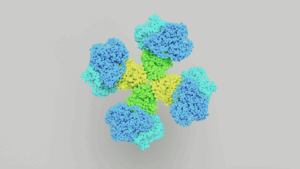News
eControl System’s marketing and selling practices create unfair impression of a commercial connection with AGA
July 2024
In July 2023, iconic British brand AGA Rangemaster Group Limited (“AGA”) filed a trade mark infringement and copyright complaint directed to eControl System’s[1] second-hand refurbished AGA cookers. The case vindicates AGA’s brand assets and has serious implications for the way in which second-hand renovated AGA ranges are marketed and sold in the future.
The IPEC’s findings, handed down in AGA Rangemaster Group Ltd v UK Innovations Group Ltd & Anor [2024] EWHC 1727, can be summarised as follows:
- each of AGA’s asserted trade marks were infringed;
- eControl System’s counterclaim, that AGA’s 2D and 3D trade marks were invalid, was rejected entirely;
- although eControl System was found to have copied the control panel AGA had designed for its own electric range cookers, there was no copyright infringement due to a s51 defence; and
- in what is likely the first case to deal with joint tortfeasance since the Supreme Court’s finding in Lifestyle Equities[2], the second Defendant and director of the first Defendant, escaped liability as a joint tortfeasor.
Each of the above findings are addressed in further detail below.
-
Trade mark infringement
eControl System described its case as an “exhaustion case”. Though infringement in the absence of an exhaustion defence was not entirely conceded in relation to sections 10(1), 10(2) and 10(3) of the Trade Marks Act 1994 (the “TMA”), at trial, eControl System’s case relied on exhaustion. Under the exhaustion doctrine, a trade mark proprietor cannot claim for infringement where the goods in question have been put on the market in the UK or EEA with its consent. However, the exhaustion defence does not apply where there exists legitimate reasons for the proprietor to oppose further dealings in the goods in question.
The Court considered the following reasons to oppose further dealings in the goods, of which AGA was required to be successful on one:
- The way in which eControl System marketed and sold the goods
The Court found that AGA’s trade marks were infringed by the way in which eControl System marketed and sold second-hand electrically converted and refurbished AGA cookers, which unfairly gave the impression that there was a commercial connection with AGA.
eControl System wrongly marketed its product as though it were one of a range of AGA products. The website created this impression and the issue was further exacerbated by eControl System’s invoices. The risk of the consumer making a link was heightened by the highly distinctive character of the AGA name. In that respect, the judgment specifically notes that eControl System’s activities “were detrimental to and took unfair advantage of the distinctive character” of AGA’s marks.
- The nature and extent of the work done to the cooker by eControl System causing damage to AGA’s reputation
The Court found that the works done to eControl System’s refurbished used AGA cookers did not give rise to a risk of serious damage to the reputation of the AGA’s trade marks so as to give AGA legitimate reasons to oppose eControl System’s activities. The Court acknowledged, however, “that there may come a point when the extent of the works done will mean that the resulting product is no longer a refurbished or renovated version of the original product but is, instead, a new and different product”.
Though it had dropped the argument by closing arguments, eControl System also tried, unsuccessfully, to argue that it had a s.11 TMA defence to infringement because the word “AGA” was used to explain the purpose of its product (i.e., that an eControl electronic conversion kit could be used in AGA cookers). The Court disagreed, finding that AGA was being used as a badge of origin in a number of instances, and that therefore eControl System’s use was not descriptive.
Further, eControl System’s use of the word “AGA” was not in accordance with honest practices; the cookers had been significantly altered by the fitting of the electronic conversion kit and that had nothing to do with AGA.
-
Counterclaim
After failing to strike-out AGA’s 2D and 3D trade marks earlier in the legal proceedings, at trial, eControl System re-visited its invalidity arguments as part of its counterclaim. eControl System argued that AGA’s 2D trade mark lacked certainty because it was liable to be understood as a 3D mark. The Court held that the average consumer would simply take the mark for what it is, a two dimensional representation of a three dimensional object.
The Defendant also argued that the 3D mark was uncertain because the visual representation of the mark was inconsistent with the verbal representation. The Court did not find any such inconsistency.
The Defendant also alleged that the 3D mark consisted exclusively of a shape or other characteristic which gave substantial value to the cooker. The Court rejected this argument without reservation. The shape of the features depicted were found to be distinctive of the AGA cooker and involved aesthetic considerations.
-
Copyright
AGA claimed that its CAD drawing depicting the design of the control panel for its electric AGA cookers was an artistic work under the Copyright, Designs and Patents Act 1988 (the “CDPA”). The Court found that the panel’s designer had made creative or aesthetic choices to design the panel and that the drawing was an artistic work. The Court also found that the Defendants had copied that panel design.
The Court found that though copyright subsisted in the panel design as an artistic work, the design document was not for something that was intended to be an artistic work (i.e., the electric AGA control panel). To that end, the Defendant could rely on the s.51 CDPA defence to copyright infringement in relation to the control panels it had inserted into its second-hand refurbished cookers.
The Court acknowledged the decision on the s.51 CDPA defence was the most difficult aspect of the copyright claim.
-
Joint tortfeasance
At the end of trial, eControl System’s counsel accepted that the second Defendant Mr McGinley was liable to be found a joint tortfeasor unless he was “saved” by the Supreme Court’s Lifestyle Equities decision[3]. Mr McGinley was held to have been in day-to-day control of eControl System, including in relation to its infringements. Said Supreme Court decision was handed down after the trial in this case but prior to the handing down of the judgment. The parties provided written submissions to the judge on Lifestyle Equities in the intervening period.
The Court found that Mr McGinley was required to have knowledge of the essential facts necessary to establish liability under s.10(1), s.10(2) and/or s.10(3) of the TMA and also, of the essential facts which ultimately prevented the Defendants’ exhaustion defence. He was found to have some knowledge but not enough to render him a joint tortfeasor.
[1] eControl System is the trading name of First Defendant UK Innovations Group Limited, the Second Defendant was Mr Michael McGinley.
[2] Lifestyle Equities CV & Anor v Ahmed & Anor [2024] UKSC 17
[3] Lifestyle Equities CV & Anor v Ahmed & Anor [2024] UKSC 17





























